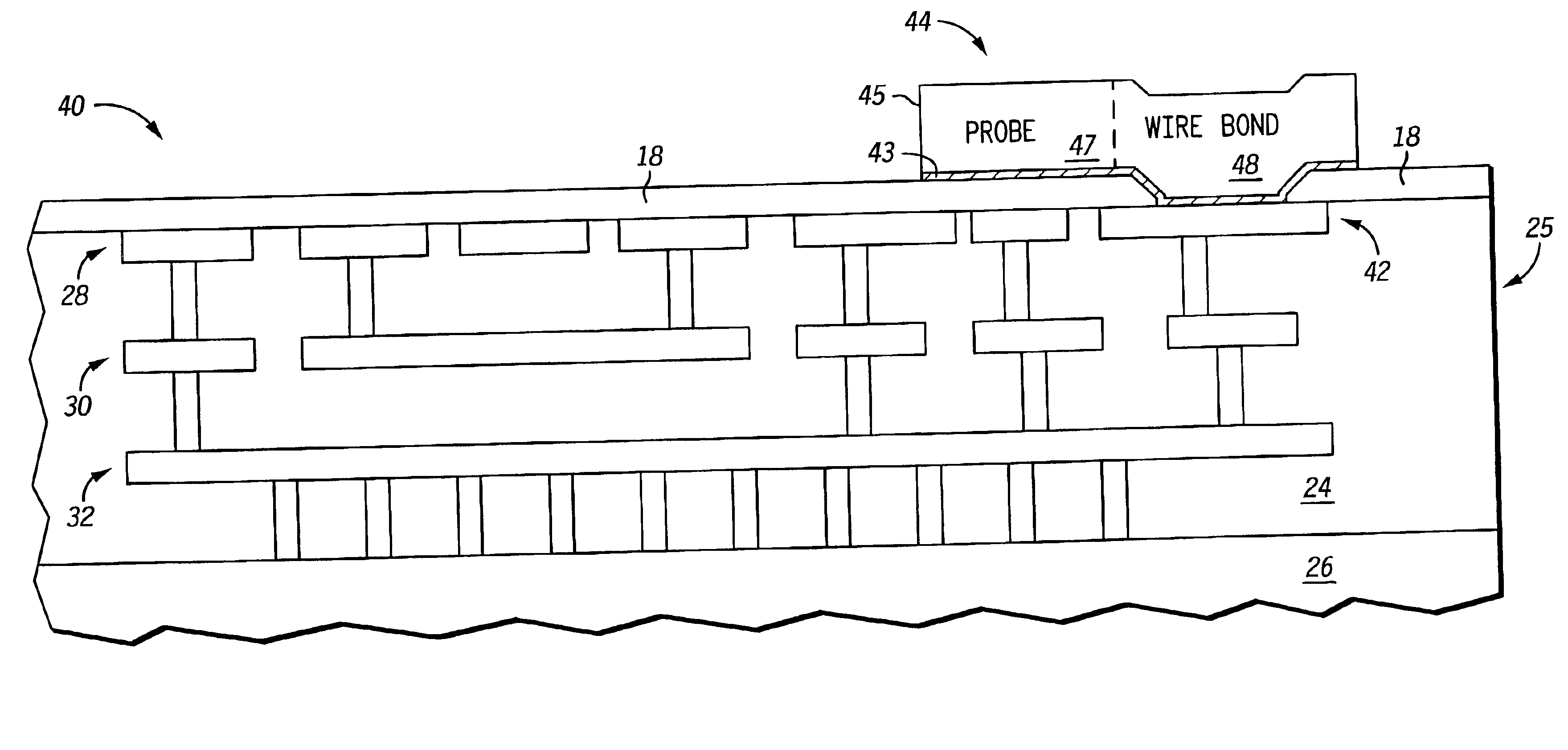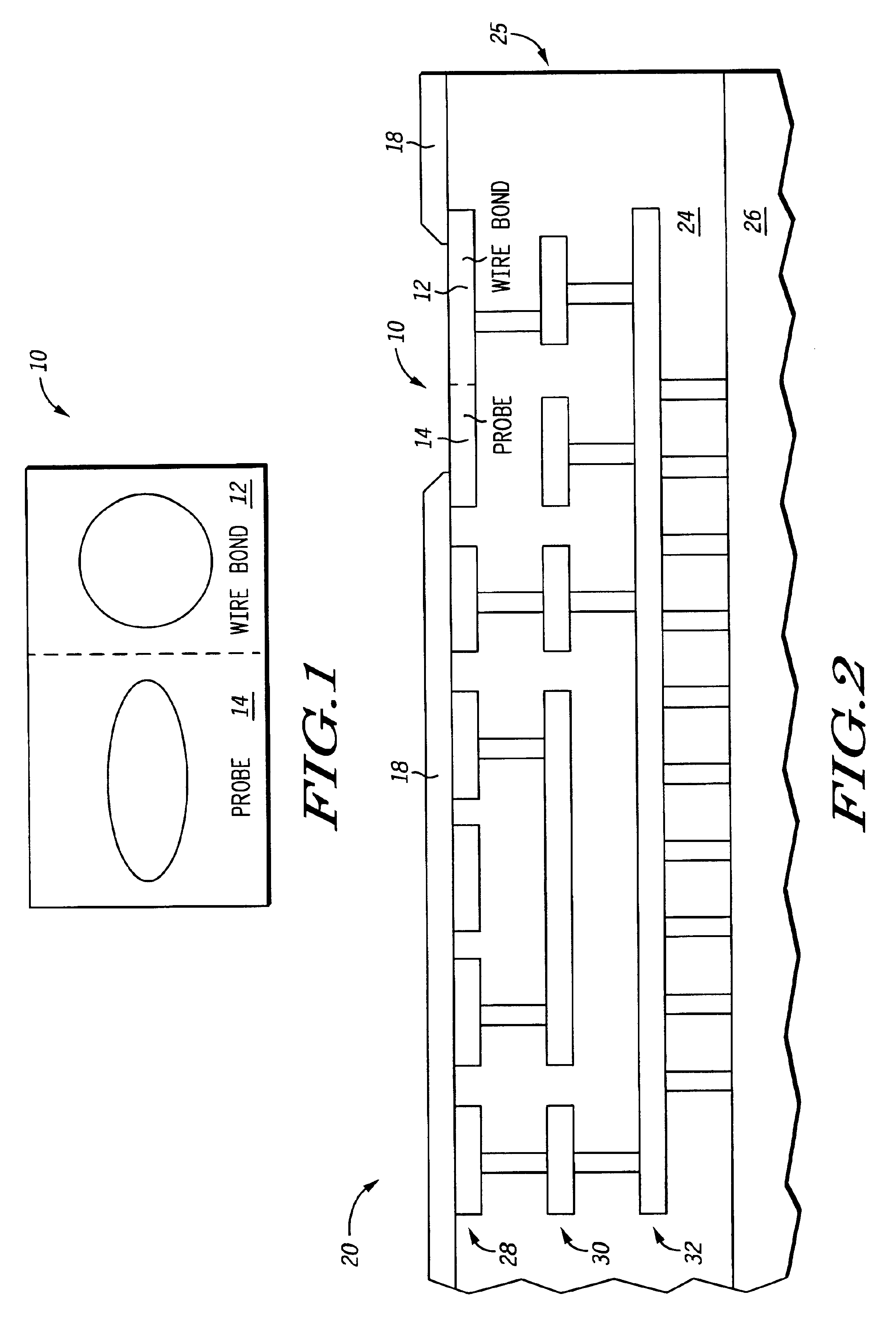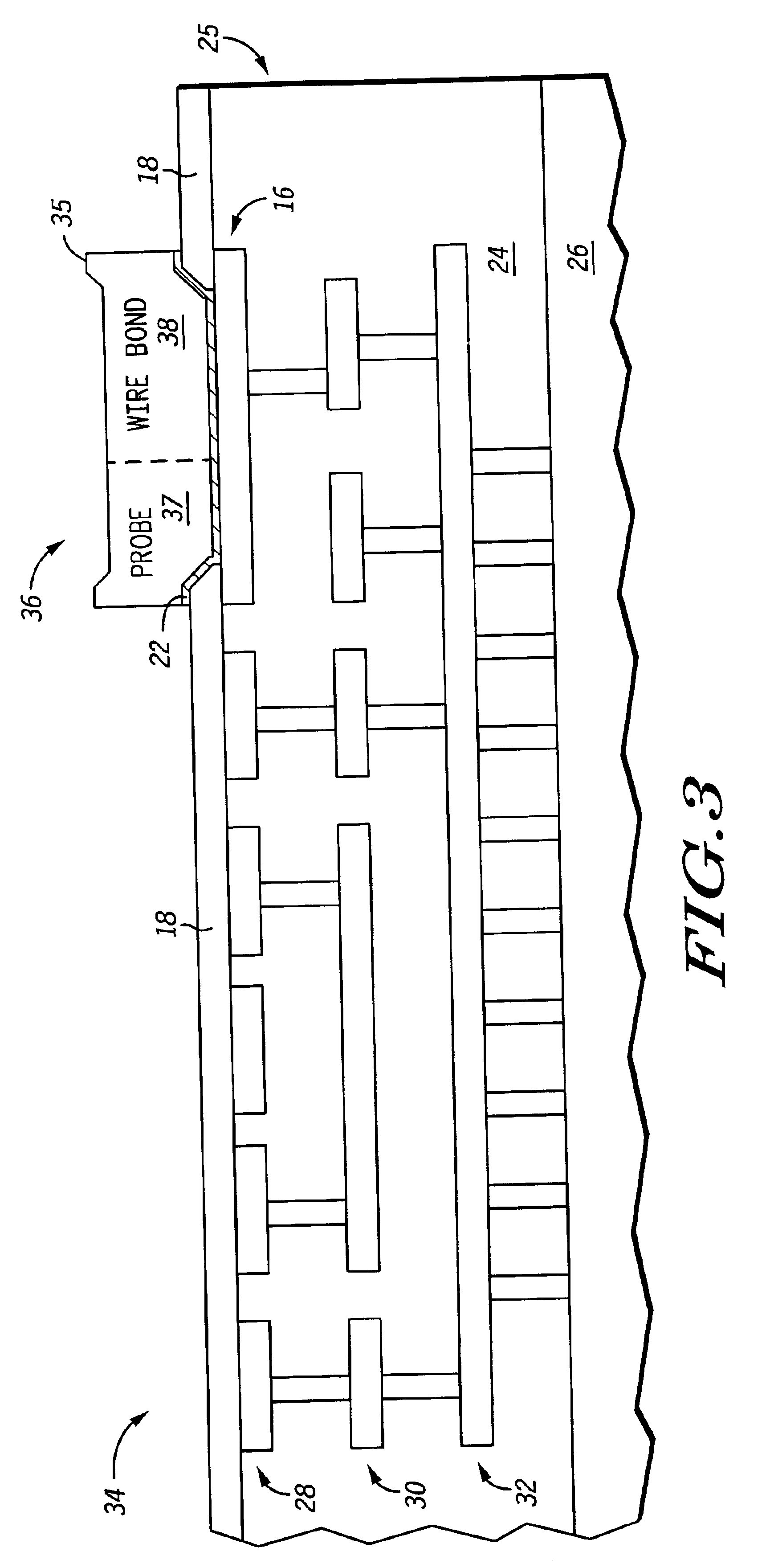Semiconductor device having a bond pad and method therefor
- Summary
- Abstract
- Description
- Claims
- Application Information
AI Technical Summary
Benefits of technology
Problems solved by technology
Method used
Image
Examples
Embodiment Construction
Generally, the present invention provides an integrated circuit having a plurality of bond pads. Each of the plurality of bond pads has a probe region and a wire bond region that are substantially non-overlapping and contiguous. In one embodiment, a bond pad extends over active circuitry and / or electrical interconnect layers of the integrated circuit. A portion of, or all, of the bond pad extends over the interconnect layers and a portion of the pad may be formed over a passivation layer and connected to a final metal layer pad. In one embodiment, the bond pad is formed from aluminum and the final metal layer pad is formed from copper.
Separating the probe region from the wire bond region and forming the bond pad over active circuitry has several advantages. In an application requiring very fine pitch between the bond pads, the probe regions and active regions may be staggered to effectively increase the distance between probe regions. By separating the probe region from the wire bon...
PUM
 Login to View More
Login to View More Abstract
Description
Claims
Application Information
 Login to View More
Login to View More - R&D
- Intellectual Property
- Life Sciences
- Materials
- Tech Scout
- Unparalleled Data Quality
- Higher Quality Content
- 60% Fewer Hallucinations
Browse by: Latest US Patents, China's latest patents, Technical Efficacy Thesaurus, Application Domain, Technology Topic, Popular Technical Reports.
© 2025 PatSnap. All rights reserved.Legal|Privacy policy|Modern Slavery Act Transparency Statement|Sitemap|About US| Contact US: help@patsnap.com



